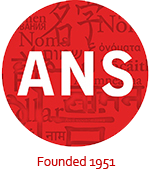On May 12, the Social Security Administration released the United States’ top baby names of 2022.
On SSA’s lists, Liam and Olivia were first, as they have since 2019.
SSA counts every spelling separately. I add together spellings pronounced the same, creating lists I believe more accurately show popularity.
When alternative spellings like Jaxon were added, Jackson was first from 2013 through 2020. In 2021, Liam beat Jackson for No. 1 for the first time. In 2022, Jackson declined again, allowing Noah to take second spot.
Liam and Noah are international baby name stars. Both rank in the top 10 in Switzerland, Sweden, Quebec, Norway, Belgium, the Netherlands, Ireland and Argentina. Noah’s also No. 1 in both England and Germany.
After Jackson, the rest of my 2022 male top 10 were Oliver, Elijah, Mateo, Lucas, Aiden, James and Luca. Mateo and Luca knocked Grayson and William back to 11th and 12th.
Mateo, the Spanish form of Matthew, rose 8.3%, jumping to sixth from 12th. Mateo got a boost back in 2015 when it was given to the baby on “Jane the Virgin.” Its rise shows the influence of Latin American culture on baby names in the United States. Mateo’s now No. 1 in Chile and Argentina, and No. 2 in Mexico.
Last year Santiago was No. 1 in Mexico. Santiago increased 19.8% here last year, third quickest rise among the top 100.
Luca rose 9.1% to reach the top 10, after soaring 37% in 2021. Luca’s the Italian and Romanian form of Luke, with Luka the same in Balkan Slavic languages.







